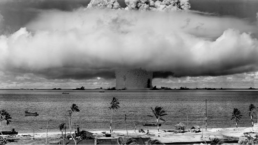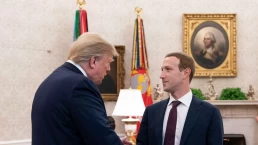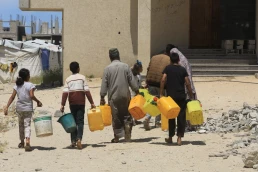A president may be reluctant to use a nuclear weapon 80 times more destructive than the bomb that destroyed Hiroshima, but perhaps less so for a destructive 2- or 3-kiloton bomb.
By Jon Letman, Truthout
Each year on March 1, Marshallese around the world mark Nuclear Victims Remembrance Day to commemorate all who have suffered and seek justice following 67 U.S. nuclear weapons tests at Bikini and Enewetak Atolls in the Marshall Islands (1946-58).
On that day in 1954, the U.S. conducted its largest ever nuclear detonation, the Castle Bravo test, a 15-megaton thermonuclear bomb 1,000 times more powerful than the bomb dropped on Hiroshima. The Bravo shot caused widespread suffering in the Marshall Islands and spread radioactive fallout around the world.

Sixty-eight years later, the United States and eight other nations continue to spend extraordinary sums — over $72 billion total in 2020 — on maintaining, expanding and modernizing their nuclear arsenals. While the overall number of nuclear weapons has been reduced dramatically from a Cold War peak of more than 70,000, today the U.S. and Russia possess 90 percent of the approximately 12,700 remaining nuclear weapons.
With the Russian invasion of Ukraine and NATO forces deployed to the alliance’s eastern flank, concerns over nuclear risks rise to the fore. Matt Korda, senior research associate with the Federation of American Scientists’ Nuclear Information Project says that at the present moment, the conflict remains well below the nuclear threshold. “While many systems deployed to Ukraine are dual-capable — meaning that they can launch both conventional and nuclear weapons — there is no indication that nuclear weapons or nuclear custodial units have been deployed along with them,” Korda says.
He cautions that, as in any war, the risks of miscommunication and irrationality remain high, and told Truthout, “it’s incumbent on all sides to ensure that there is no danger of nuclear escalation.”
Even as U.S. presidents pay lip service to “a world without nuclear weapons,” the U.S. currently has an estimated total inventory of just over 5,400 nuclear weapons ranging from 0.3 kilotons up to 1.2 megatons. A warhead with a yield (amount of energy released by a nuclear explosion) of one kiloton is equivalent to 1,000 tons of TNT. One megaton equals 1 million tons of TNT.
Recent Posts
“Arrest Now, Ask Questions Later”: Why Did L.A. ICE Agents Arrest and Jail U.S. Citizen Andrea Velez?
July 3, 2025
Take Action Now “They didn’t have vests that said ICE or anything. Their cars didn’t have license plates. … Just because of the color of our…
Trump’s Big, Beautiful Bill Is Naked Class War
July 3, 2025
Take Action Now Trump’s “Big, Beautiful Bill” trades tax cuts on millionaires for the dissolution of society.By Hamilton Nolan, In These Times…
Mayor Mamdani’s First Day, A Zero Hour Conversation With Richard Wolff
July 2, 2025
Take Action Now If elected, what would Mayor Mamdani do on his first day in City Hall? How would a democratic socialist govern as a big-city mayor?……
The U.S. Is Funding A Bloodbath At Gaza Aid Centers
July 2, 2025
Take Action Now The admin just gave $30M to GHF, the organization at the center of charges that Israel is weaponizing assistance and shooting at…




